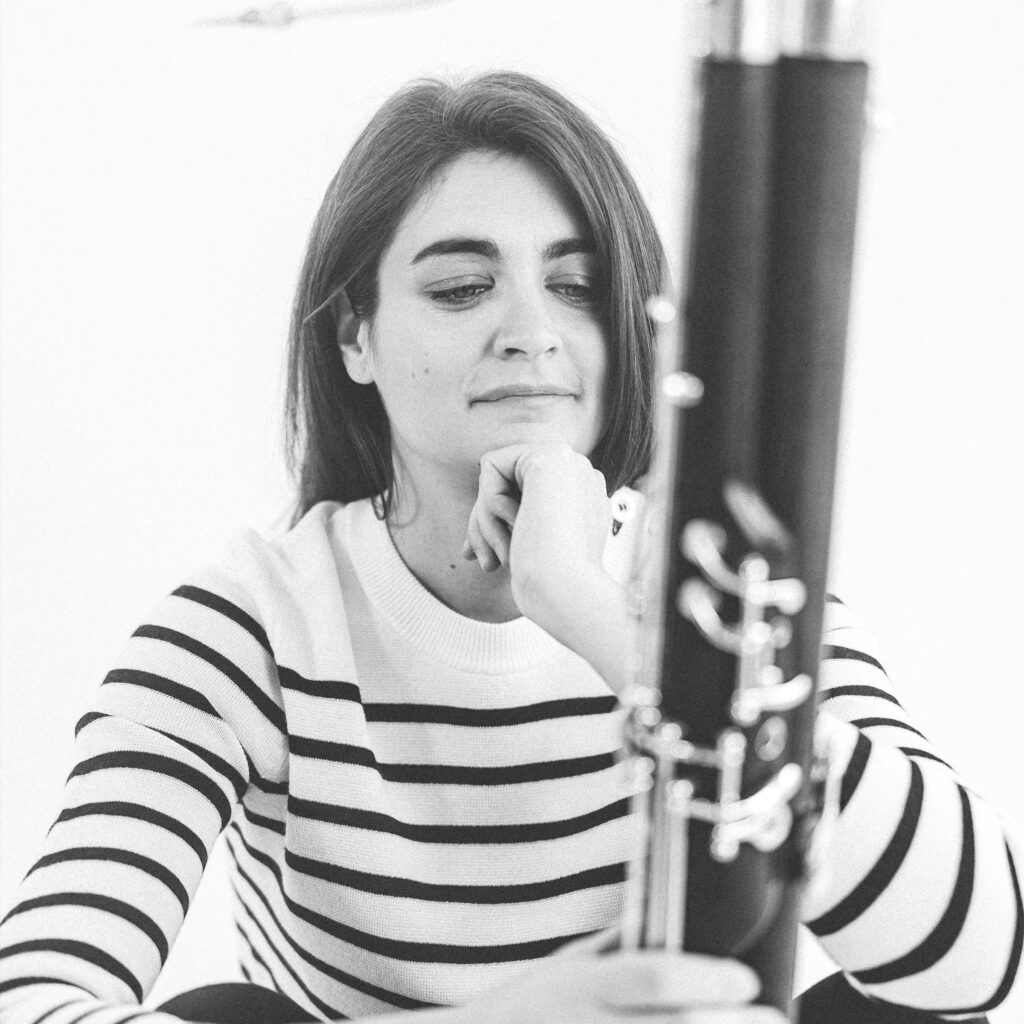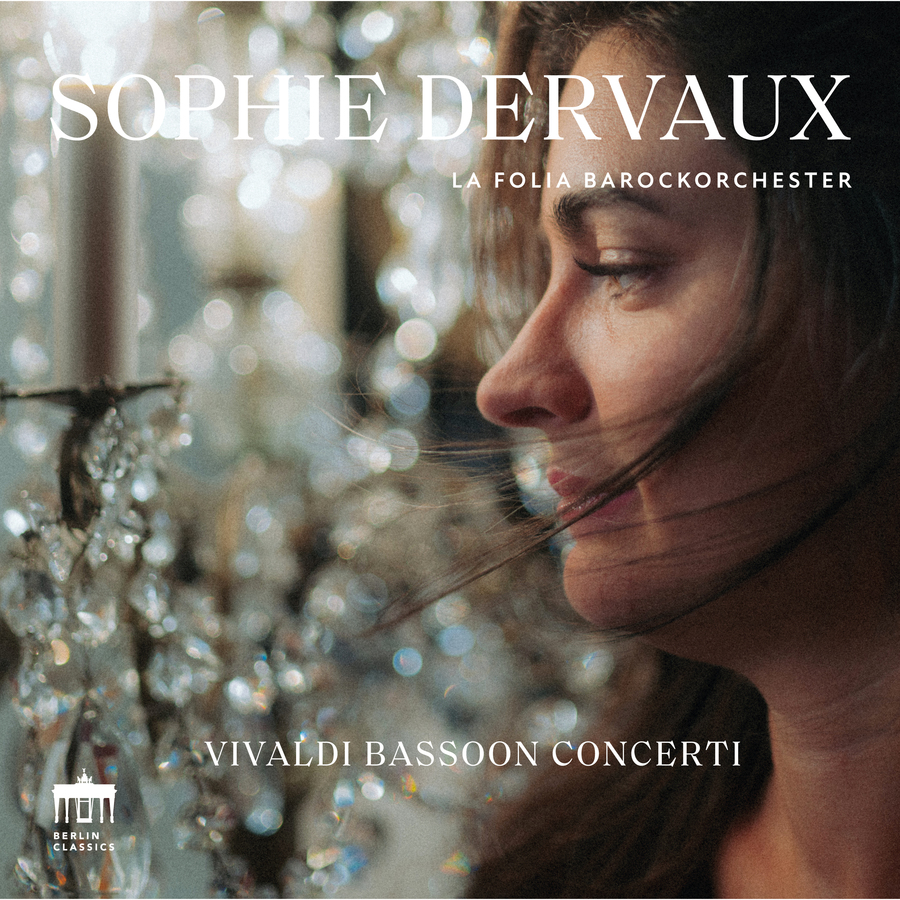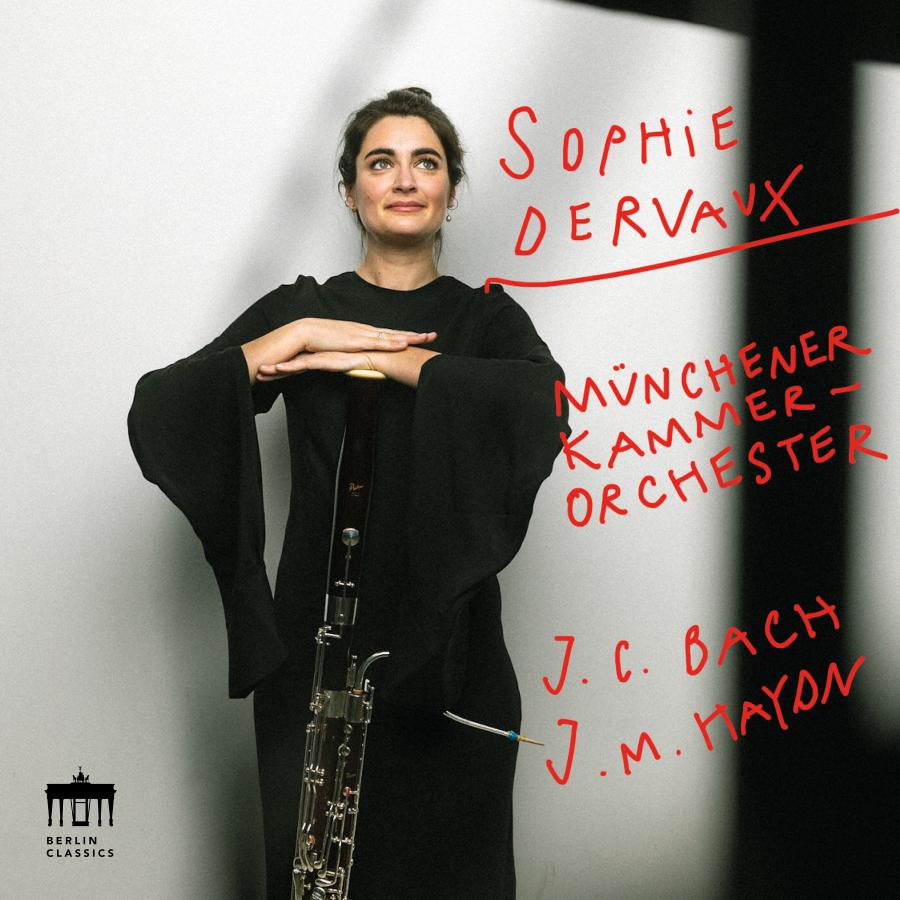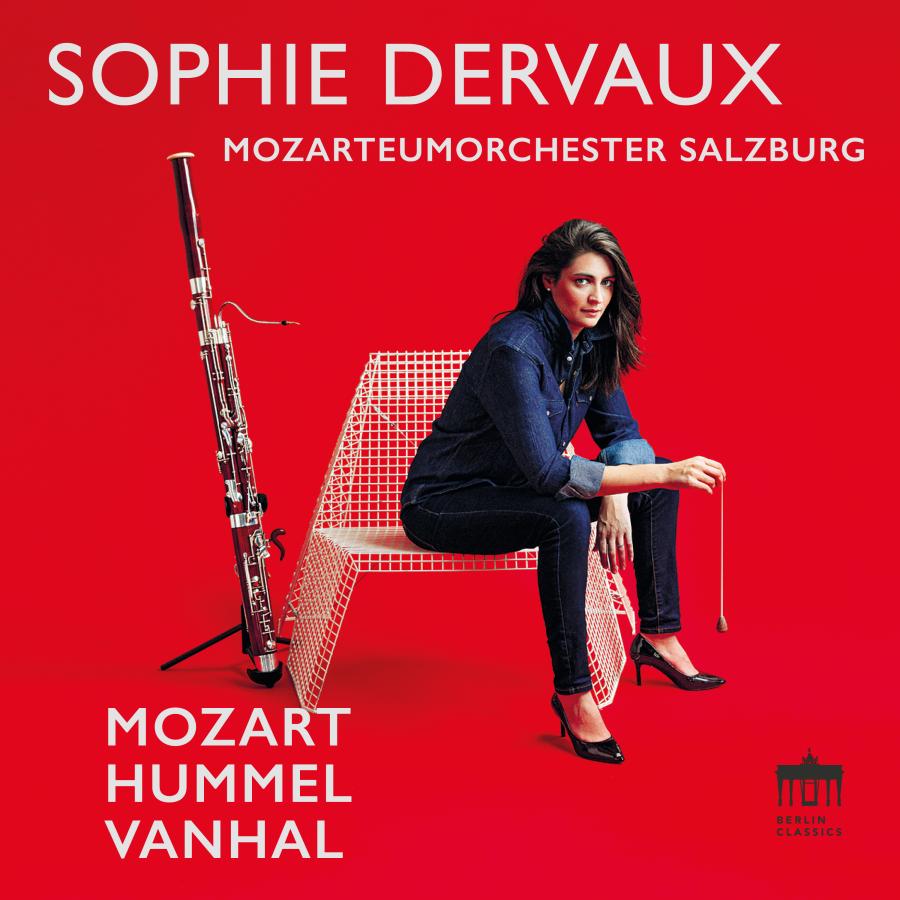Vivaldi: Concertos for bassoon
In her professional career, which takes her all over the world as soloist and member of the Vienna Philharmonic, Sophie Dervaux has the good fortune to be surrounded by music in all its aspects. Her great love since childhood, however, has been the music of the Baroque: “I think it’s the greatest of all.” No wonder, then, that the bassoonist had the idea a while ago of expressing her first love on record and making an album of works by great masters of the Baroque from Telemann to Handel. Sophie Dervaux would never have dreamt that the fascinating idea would turn into a project of massive proportions. “Somewhere along the way, this Baroque project turned into a plan to record all Antonio Vivaldi’s bassoon concertos,” she says without false modesty over what she has taken on. She never was one to shrink from challenges, as one can easily attest from her impressive biography. How else could she have climbed so many pinnacles at such a young age – whether as an instrumentalist or increasingly, of late, on the conductor’s rostrum. Her complete edition of Vivaldi is admittedly, as Sophie Dervaux will confirm, a prospect of Everest: a holy mountain, if you like, surrounded by a mystic aura both for bassoonists and for their audience. It represents the core repertoire of a man who can justly be counted among the most astonishing phenomena of music history.
What intellectual energy, what heights of inspiration must a composer have to create a body of work like that of Antonio Vivaldi? The sheer number of his works, in particular the instrumental concertos, is greater than many can conceive. In a burst of exceptional ill humour, Igor Stravinsky described his Baroque forerunner as “a dull fellow who could compose the same concerto six hundred times over”. Quite apart from the fact that Stravinsky was rather overstating his case (about 450 concertos by Vivaldi have in fact been handed down to us), other composers are full of praise for the music of the Venetian maestro. Perhaps the greatest admirer of Vivaldi was Johann Sebastian Bach, who during his years at the Weimar court (1708-1717) arranged over 20 of his concertos for harpsichord or organ.
About 250 of Vivaldi’s concertos, the lion’s share of his output, feature the violin as the solo instrument. This is hardly surprising, given that Vivaldi was one of the star violinists of his time, who liked to show off his talent in performances of his own works. The fact that his next favourite solo instrument is the bassoon is less well known. Vivaldi left us a total of 39 bassoon concertos, thus more – far more! – than Mozart wrote for the piano. This figure is all the more surprising when one reflects that at the start of the 18th century, the bassoon was principally used for continuo, that is to say, as an accompanying instrument to which the bass line was assigned. As a matter of fact, it was Vivaldi who freed it from this supporting role and he was the first prominent composer to place it in the spotlight.
If today’s bassoonists claim Vivaldi as “their” composer, that is due not only to the Venetian’s ground-breaking work, but also to the quality and originality of his music. “No matter whether you are auditioning for a position or qualifying for graduation, a Vivaldi concerto is likely to be one of the set pieces,” Sophie Dervaux testifies from personal experience. That naturally applies just as well to international competitions like the prestigious ARD Music Competition, which Sophie Dervaux won in 2013 in part because of her captivating interpretation of Vivaldi’s G major Concerto RV 493 – proof of her success to date as a musician accompanied by the Baroque composer: “Even as a schoolgirl I played some of his concertos, the first of them at 14, after one year of bassoon lessons.” This early start is evidence of Sophie Dervaux’s instrumental capabilities. At the same time, it demonstrates that if even “beginners” can make sense of his music, Vivaldi certainly knew just how to approach the bassoon. “We don’t know if he had mastered the bassoon himself,” says the artist, “but we do know that he knew exactly how to compose for it.” In the case of Vivaldi, as with Mozart, one essentially needs a degree of musical maturity that even the most gifted artists take many years to acquire, and so if Sophie Dervaux was technically capable of playing individual Vivaldi concertos as a teenager, she is certainly well equipped to embark upon a complete edition of his concertante works for bassoon.
And she is going to play them on a modern instrument and not on one that corresponds to the bassoon that Vivaldi knew. “My original idea was to play the repertoire on a Baroque bassoon,” says Sophie Dervaux, “but in the end I decided against it for the Vivaldi recordings.” She feels more at home with the modern bassoon, even if she is altogether familiar with its predecessor: during her studies at the Conservatoire National Supérieur de Musique in Lyon, Sophie Dervaux engaged intensively with the Baroque bassoon, studied the differences in playing technique, intonation and articulation and acquired so much expertise that she could theoretically have switched to the older instrument, if she had been specifically preparing for an Early Music career. “It’s not unusual for bassoonists to shift their focus,” she says, “after all, Baroque music is some of the most important repertoire that we have.” And some of the finest, with the name of Antonio Vivaldi almost always taking first place when it comes to bassoon concertos of the period.
We do not know who he originally composed his concertos for, although we are well aware of the environment in which they were written. He taught the pupils of the legendary Ospedale della Pietà, one of four charitable institutions in the Venice of those days, which took in orphaned, illegitimate or abandoned girls and offered them a first-rate musical education. It was at this hospice that Antonio Vivaldi began his career as a music teacher soon after his admission to the priesthood in 1703. While he also read Mass at the adjoining church of Santa Maria della Pietà – a daily duty that he was soon obliged to forgo for health reasons – he primarily gave instruction in the violin and other stringed instruments. Eventually, in 1716, Vivaldi assumed the overall musical direction of the Ospedale, whose orchestra became one of Venice’s principal musical attractions under his command. The girls – up to 70 of them – who gave public performances were constantly to be heard in new concertos, supplied by their maestro de’ concerti, who was also a successful opera impresario.
The French writer Charles de Brosses gave his impressions of the female performers after a visit to Venice at the end of the 1730s: “They play violin, flute, organ, oboe, violoncello, bassoon – in a word, no instrument is so big as to scare them.” There is general agreement that this judgement also applies to the fearless soloist (or soloists) for whom Vivaldi crafted his bassoon concertos. And otherwise than de Brosses humorously suggested, it is not the size of the instrument that is the greatest challenge. Least of all for a 21st-century bassoonist like Sophie Dervaux. Her principal task, as she sees it, is to appreciate the peculiarities of period instruments with their coarser tone and a construction calling for different fingering and apply that knowledge to the potential of today’s performance practice – and ultimately to blend with the historically informed sound of the ensemble La Folia, all of whose musicians play on original instruments as a matter of course.
How well the “experiment” has succeeded was a surprise to the participants themselves, particularly as it was their first joint project. “We didn’t even have time to give advance public performances of the works we have recorded,”, says Sophie Dervaux. The risk of thinking big at the very start certainly paid off, even if the project took time to come to fruition. Robin Peter Müller, leader of La Folia, and Sophie Dervaux had met at a festival some years earlier, become firm friends on the spot and just as spontaneously resolved to make music together as soon as they could. The bassoonist, who regularly breaks new ground as an interpreter of contemporary works, saw the encounter as a stroke of luck, particularly as she noticed that they had many things in common. Sophie Dervaux is enthusiastic: “What I appreciate in La Folia is the willingness to really seek out art and sometimes go to the limit.” Already immersed in the music of the concertos she is tackling next, she looks forward to the later phases of the Vivaldi complete edition – with the orchestra slimmed down as before. “There are eight of us in all,” says the bassoonist, who is very much taken with the overall freedom and flexibility of this formation. The musicians are in perfect harmony, both musically and personally. “This was the nicest recording I have ever made,”, says Sophie Dervaux. Their enjoyment is audible for all listeners to the album.
Vivaldi: Bassoon Concerti Sophie Dervaux & La Folia Barockorchester
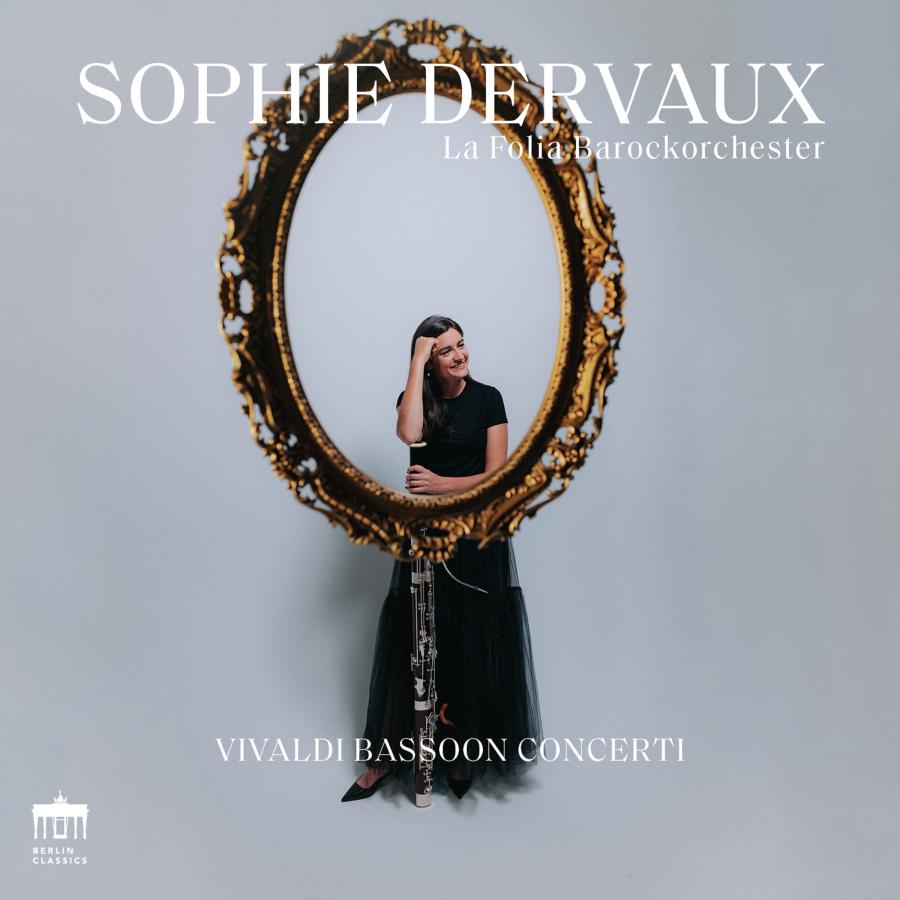
Composer

Further information
Genre
Klassik
Fagott
Publication date
08.03.2024
Vivaldi: Concertos for bassoon
In her professional career, which takes her all over the world as soloist and member of the Vienna Philharmonic, Sophie Dervaux has the good fortune to be surrounded by music in all its aspects. Her great love since childhood, however, has been the music of the Baroque: “I think it’s the greatest of all.” No wonder, then, that the bassoonist had the idea a while ago of expressing her first love on record and making an album of works by great masters of the Baroque from Telemann to Handel. Sophie Dervaux would never have dreamt that the fascinating idea would turn into a project of massive proportions. “Somewhere along the way, this Baroque project turned into a plan to record all Antonio Vivaldi’s bassoon concertos,” she says without false modesty over what she has taken on. She never was one to shrink from challenges, as one can easily attest from her impressive biography. How else could she have climbed so many pinnacles at such a young age – whether as an instrumentalist or increasingly, of late, on the conductor’s rostrum. Her complete edition of Vivaldi is admittedly, as Sophie Dervaux will confirm, a prospect of Everest: a holy mountain, if you like, surrounded by a mystic aura both for bassoonists and for their audience. It represents the core repertoire of a man who can justly be counted among the most astonishing phenomena of music history.
What intellectual energy, what heights of inspiration must a composer have to create a body of work like that of Antonio Vivaldi? The sheer number of his works, in particular the instrumental concertos, is greater than many can conceive. In a burst of exceptional ill humour, Igor Stravinsky described his Baroque forerunner as “a dull fellow who could compose the same concerto six hundred times over”. Quite apart from the fact that Stravinsky was rather overstating his case (about 450 concertos by Vivaldi have in fact been handed down to us), other composers are full of praise for the music of the Venetian maestro. Perhaps the greatest admirer of Vivaldi was Johann Sebastian Bach, who during his years at the Weimar court (1708-1717) arranged over 20 of his concertos for harpsichord or organ.
About 250 of Vivaldi’s concertos, the lion’s share of his output, feature the violin as the solo instrument. This is hardly surprising, given that Vivaldi was one of the star violinists of his time, who liked to show off his talent in performances of his own works. The fact that his next favourite solo instrument is the bassoon is less well known. Vivaldi left us a total of 39 bassoon concertos, thus more – far more! – than Mozart wrote for the piano. This figure is all the more surprising when one reflects that at the start of the 18th century, the bassoon was principally used for continuo, that is to say, as an accompanying instrument to which the bass line was assigned. As a matter of fact, it was Vivaldi who freed it from this supporting role and he was the first prominent composer to place it in the spotlight.
If today’s bassoonists claim Vivaldi as “their” composer, that is due not only to the Venetian’s ground-breaking work, but also to the quality and originality of his music. “No matter whether you are auditioning for a position or qualifying for graduation, a Vivaldi concerto is likely to be one of the set pieces,” Sophie Dervaux testifies from personal experience. That naturally applies just as well to international competitions like the prestigious ARD Music Competition, which Sophie Dervaux won in 2013 in part because of her captivating interpretation of Vivaldi’s G major Concerto RV 493 – proof of her success to date as a musician accompanied by the Baroque composer: “Even as a schoolgirl I played some of his concertos, the first of them at 14, after one year of bassoon lessons.” This early start is evidence of Sophie Dervaux’s instrumental capabilities. At the same time, it demonstrates that if even “beginners” can make sense of his music, Vivaldi certainly knew just how to approach the bassoon. “We don’t know if he had mastered the bassoon himself,” says the artist, “but we do know that he knew exactly how to compose for it.” In the case of Vivaldi, as with Mozart, one essentially needs a degree of musical maturity that even the most gifted artists take many years to acquire, and so if Sophie Dervaux was technically capable of playing individual Vivaldi concertos as a teenager, she is certainly well equipped to embark upon a complete edition of his concertante works for bassoon.
And she is going to play them on a modern instrument and not on one that corresponds to the bassoon that Vivaldi knew. “My original idea was to play the repertoire on a Baroque bassoon,” says Sophie Dervaux, “but in the end I decided against it for the Vivaldi recordings.” She feels more at home with the modern bassoon, even if she is altogether familiar with its predecessor: during her studies at the Conservatoire National Supérieur de Musique in Lyon, Sophie Dervaux engaged intensively with the Baroque bassoon, studied the differences in playing technique, intonation and articulation and acquired so much expertise that she could theoretically have switched to the older instrument, if she had been specifically preparing for an Early Music career. “It’s not unusual for bassoonists to shift their focus,” she says, “after all, Baroque music is some of the most important repertoire that we have.” And some of the finest, with the name of Antonio Vivaldi almost always taking first place when it comes to bassoon concertos of the period.
We do not know who he originally composed his concertos for, although we are well aware of the environment in which they were written. He taught the pupils of the legendary Ospedale della Pietà, one of four charitable institutions in the Venice of those days, which took in orphaned, illegitimate or abandoned girls and offered them a first-rate musical education. It was at this hospice that Antonio Vivaldi began his career as a music teacher soon after his admission to the priesthood in 1703. While he also read Mass at the adjoining church of Santa Maria della Pietà – a daily duty that he was soon obliged to forgo for health reasons – he primarily gave instruction in the violin and other stringed instruments. Eventually, in 1716, Vivaldi assumed the overall musical direction of the Ospedale, whose orchestra became one of Venice’s principal musical attractions under his command. The girls – up to 70 of them – who gave public performances were constantly to be heard in new concertos, supplied by their maestro de’ concerti, who was also a successful opera impresario.
The French writer Charles de Brosses gave his impressions of the female performers after a visit to Venice at the end of the 1730s: “They play violin, flute, organ, oboe, violoncello, bassoon – in a word, no instrument is so big as to scare them.” There is general agreement that this judgement also applies to the fearless soloist (or soloists) for whom Vivaldi crafted his bassoon concertos. And otherwise than de Brosses humorously suggested, it is not the size of the instrument that is the greatest challenge. Least of all for a 21st-century bassoonist like Sophie Dervaux. Her principal task, as she sees it, is to appreciate the peculiarities of period instruments with their coarser tone and a construction calling for different fingering and apply that knowledge to the potential of today’s performance practice – and ultimately to blend with the historically informed sound of the ensemble La Folia, all of whose musicians play on original instruments as a matter of course.
How well the “experiment” has succeeded was a surprise to the participants themselves, particularly as it was their first joint project. “We didn’t even have time to give advance public performances of the works we have recorded,”, says Sophie Dervaux. The risk of thinking big at the very start certainly paid off, even if the project took time to come to fruition. Robin Peter Müller, leader of La Folia, and Sophie Dervaux had met at a festival some years earlier, become firm friends on the spot and just as spontaneously resolved to make music together as soon as they could. The bassoonist, who regularly breaks new ground as an interpreter of contemporary works, saw the encounter as a stroke of luck, particularly as she noticed that they had many things in common. Sophie Dervaux is enthusiastic: “What I appreciate in La Folia is the willingness to really seek out art and sometimes go to the limit.” Already immersed in the music of the concertos she is tackling next, she looks forward to the later phases of the Vivaldi complete edition – with the orchestra slimmed down as before. “There are eight of us in all,” says the bassoonist, who is very much taken with the overall freedom and flexibility of this formation. The musicians are in perfect harmony, both musically and personally. “This was the nicest recording I have ever made,”, says Sophie Dervaux. Their enjoyment is audible for all listeners to the album.
Tracklist - These are the tracks you will hear on the album
Vivaldi: Bassoon Concerti
Sophie Dervaux & La Folia Barockorchester
1
I. Allegro
2
II. Largo
3
III. Allegro
4
I. Allegro Molto
5
II. Andante Molto
6
III. Allegro
7
I. Allegro
8
II. Larghetto
9
III. Allegro Molto
10
I. Largo
11
II. I Fantasmi. Presto
12
III. Il Sonno. Andante Molto
13
IV. Sorge l'aurora. Allegro
14
I. Allegro Poco
15
II. Andante
16
III. Allegro
17
I. Allegro
18
II. Largo
19
III. Minuetto



